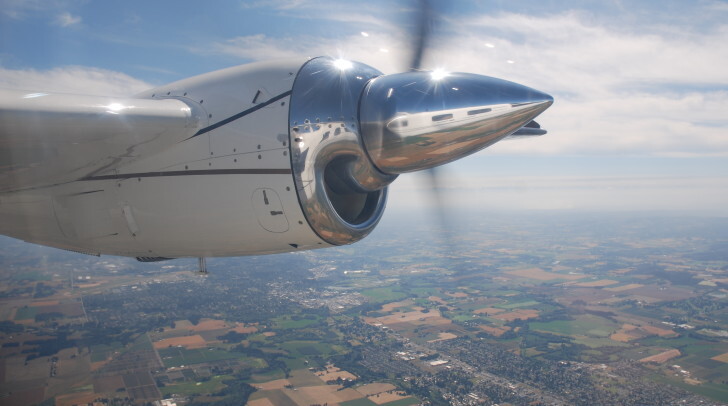By Helmuth Eggeling

Pilots frequently ask me what to do if they encounter stiffer than normal resistance when hand-turning the propeller during routine pre-flight inspections, especially when the higher resistance is accompanied by a “squeaking” noise.
This preflight issue is brought up more often than most other questions I get during the many engine operational discussions I have with operators. Therefore, I thought it might be useful to address the subject here.
My comments are based on an old Garrett Service Information Letter, SIL P331-82, dated July 16, 1975. SILs are usually written for those folks who maintain airplanes. They seldom find their way into the flight operations departments or owners’/operators’ mailboxes for the pilots to read. This particular SIL applies to preflight actions and therefore is pertinent to pilots.
Although some of the inspections listed below are intended for maintenance personnel only, pilots should have a basic understanding of what could cause high rotational resistance when hand-turning the propeller during preflight inspections and, if that occurs, what must be done to determine the integrity of the TPE331 engine.
NOTE: Uniform high rotational resistance when the propeller is hand-rotated should not be confused with the phenomenon of unequal resistance to hand-turning, which indicates the possible existence of shaft bow.
WHY THE DRAG?
A higher than normal drag or rotational resistance may be encountered with new-production or newly overhauled engines, or engines that have been modified to the turbine bearing hydraulic rear mount configuration, as during an interim hot end inspection. The condition will be evident when the propeller is rotated by hand.
Experience has indicated that this drag is most frequently associated with the incorporation of the turbine bearing hydraulic rear mount. The interstage turbine seals do not break in as rapidly in engines having the hydraulic rear mount as they do in engines incorporating the earlier configuration mechanical resilient mount. This is due to a smoother acceleration through the critical speed range.
The high drag is encountered in static and low RPM conditions, such as when the propeller is hand-rotated, and the engine may emit a squeaking noise. This occurs because the main rotating group is contacting the interstage seals at low RPM.
When sufficient RPM is reached, increasing oil pressure will provide the hydraulic oil film necessary to center the main rotating group, and the drag condition disappears.
The forgoing condition as outlined is normal, but must not be confused with internal engine distress due to other causes. The following recommendations are an elaboration of the troubleshooting procedures in the maintenance manual.
WHAT TO INSPECT
To differentiate between a normal and an abnormal drag condition, the following visual inspection should be accomplished whenever abnormal drag is suspected. The inspections described are strictly for certified mechanics and are not intended for pilots, who have inspection access to the engine inlet/first-stage impeller blades only.
- Inspect the first-stage compressor for any evidence of damage or contact with the compressor shroud.
- Inspect third-stage turbine wheel for foreign object damage, overheat, or rubbing.
- Inspect turbine rear support for broken or cracked struts.
- Inspect for evidence of metal spray in the tail pipe area and on the forward face of the third-stage turbine wheel blades. This condition would appear as minute metal particles or specks resembling aluminum or titanium, and could indicate a compressor-wheel rub that may not be visible from the front of the engine.
- Inspect the engine oil filter for excessive metal. If questionable, send the filter to the lab for analysis.
Providing the forgoing checks are normal and all the engine operational modes and parameters are normal, continue to operate the engine. The drag condition should subside with additional operating time.
These tips are intended to be supplemental to the FAA-approved limitations and operating procedures published in the applicable AFM/POH and Engine Maintenance Manual. These manuals are always the final authority for operation and inspection of the aircraft and engine.
For additional discussions on these or any other engine operational issues, please contact the Pilot Advisor Group in Phoenix, Arizona at (602) 231-2697; mobile (602) 363-9316; e-mail [email protected]; or AeroTech Support Phone at (800) 601-3099 (U.S.) or Internationally (602) 365-3099; fax (602) 365-3343; email [email protected].
